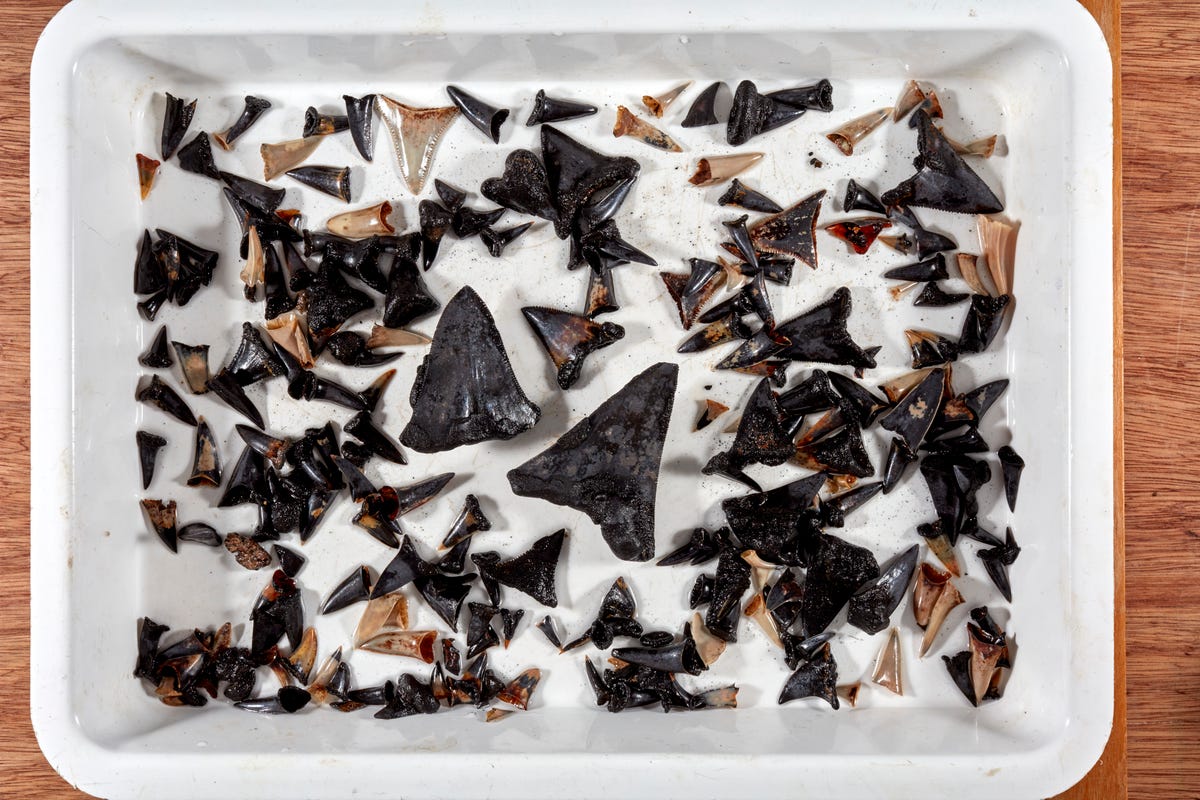At the bottom of the Indian Ocean, at a depth of more than 17,000 feet, lies a shark graveyard. The elasmobranch cemetery, discovered in October by scientists aboard an Australian research vessel, contained more than 750 fossilized shark teeth, representing both modern and ancient sharks.

The surprising find was made during a trawl survey conducted aboard the RV Investigator, a research vessel operated by Australia’s national science agency, the Commonwealth Scientific and Industrial Research Organisation, or the CSIRO. A huge trawl net was dragged along the ocean floor, gathering up the bounty of pointy teeth from a variety of species, in the marine park surrounding the Cocos (Keeling) Islands.
The marine park covers an area of over 180,000 square miles of the Indian Ocean, situated west of Australia and Indonesia. It, along with the Christmas Island Marine Park, was established on March 20 by the Australian government. Together, the marine parks cover an area about twice the size of the Great Barrier Reef marine park.
Sharks, being largely made of cartilage, don’t leave behind beautifully preserved skeletons when they die. Generally, the only remains are teeth and scales. Scientists use these remains to understand the biodiversity of the ocean, past and present — the fossils are essentially windows to the past. They also provide a way to understand the types of species in the area in more recent history.
The recently discovered netherworld necropolis is stunning because of just how abundant the fossilized chompers were. Glenn Moore, curator of fishes at the Western Australian Museum, said the number of teeth found in a relatively small area was “astounding.”

Shark teeth collected at a depth of more than 17,000 feet near the Cocos (Keeling) Islands.
Moore is currently aboard the RV Investigator as it undertakes a voyage just off the coast of Western Australia in the Gascoyne Marine Park. He notes that shark teeth have also been found on that voyage, but not in the kind of numbers seen during the Cocos (Keeling) Islands trip.
That voyage was extremely fruitful, but the RV Investigator has also made significant finds in Gascoyne.
“Early in the voyage, we collected a striking small, stripey hornshark,” said Will White, a shark expert with the CSIRO, in a press release.
The shark (pictured in the lead image) is new to science and will be used to describe the species. Based on its appearance, it’s believed to be part of the generally harmless family of sharks known as the bullheads.
According to the current voyage’s chief scientist, John Keesing, the RV Investigator’s recent jaunts into the sea are basically overflowing with species that have never been seen before.
“It’s been estimated that around a third of the species collected on recent biodiversity survey voyages on RV Investigator may be new to science,” he said.
The surveys come at a particularly important time for biodiversity. This week, world leaders meet in Montreal at the UN’s major biodiversity conference, COP15. The conference will attempt to set a course for protecting the natural world over the next decade, establishing how nations can protect animal and plant life on land and in the seas. Because while a shark graveyard at the bottom of the ocean certainly sounds cool, an ocean full of ghosts doesn’t.
source: cnet.com





